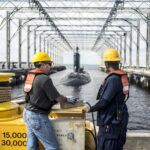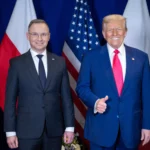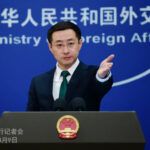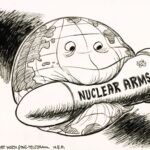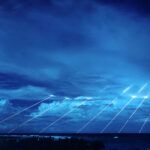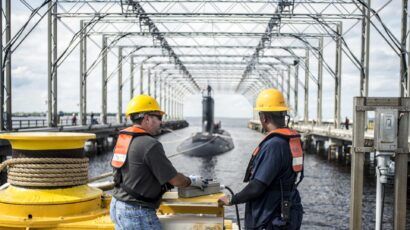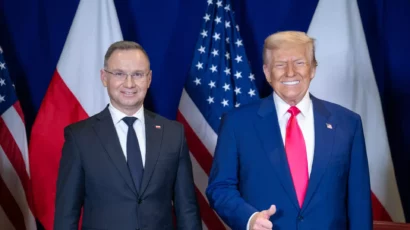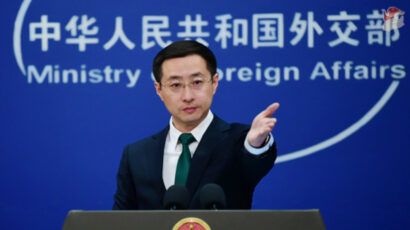Despite the risks, Russia continues to use Ukraine’s Zaporizhzhia nuclear plant as a source of leverage
By Darya Dolzikova | June 6, 2024
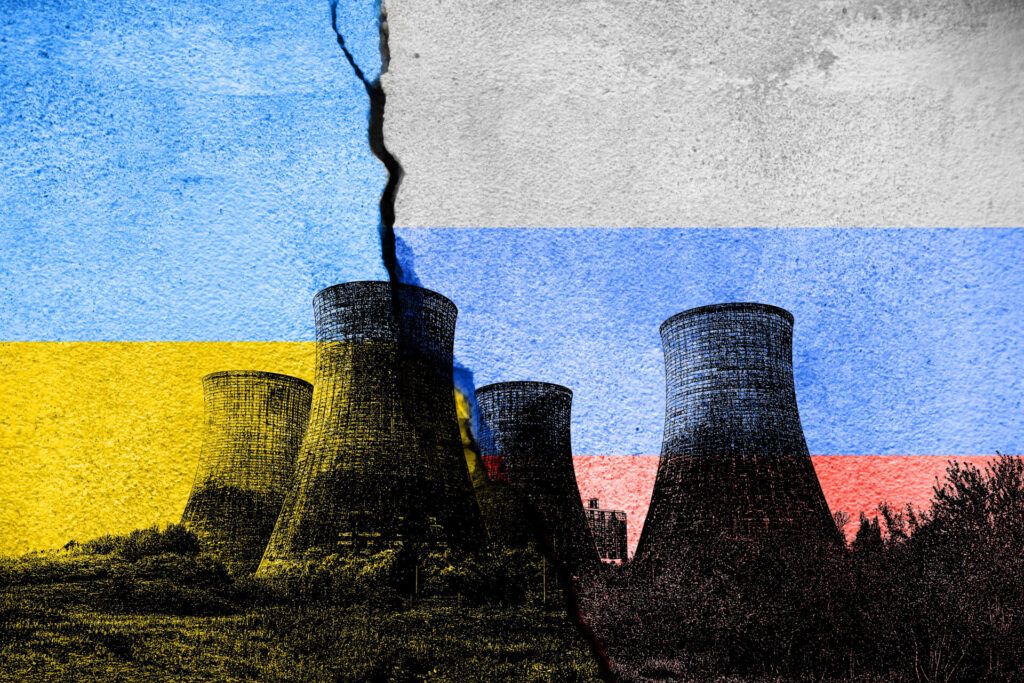 To minimize Russia's leverage from holding the Zaporizhzhia nuclear power plant at risk, Ukraine's partners must press Moscow to keep all reactors shut down and help Kyiv to prepare for a possible nuclear safety incident at the plant. (Credit: Image by Florent via Adobe Stock)
To minimize Russia's leverage from holding the Zaporizhzhia nuclear power plant at risk, Ukraine's partners must press Moscow to keep all reactors shut down and help Kyiv to prepare for a possible nuclear safety incident at the plant. (Credit: Image by Florent via Adobe Stock)
In April, The Wall Street Journal reported that Russia may be planning to restart at least one of the six reactors at Ukraine’s Zaporizhzhia Nuclear Power Plant (ZNPP), which Russia has occupied since March 2022. The reporting raised concerns about the safety of the plant, were such a decision to be taken. Then on May 28, Aleksey Likhachev, the head of Russia’s state-owned nuclear enterprise, Rosatom, stated that the restarting of the ZNPP would be conditional on guarantees of the facility’s safety, adding that “time will tell” how the requisite safety conditions will be met and that they could be achieved through the retreat of the front line “as far as possible” from the ZNPP.
The International Atomic Energy Agency (IAEA) has since confirmed that an understanding has been reached that the ZNPP’s six reactors “should remain in cold shutdown for the time being.”
But as long as the ZNPP remains under Russian occupation, Moscow will be able to continue using the plant as a source of blackmail to pre-empt any future Ukrainian effort to regain control. To counter Russia’s nuclear blackmailing, Western countries must intensify their military, nuclear safety, and emergency response support to Ukraine, as well as counter Russian disinformation in relation to the state of ZNPP operations and attacks on the facility. Such measures can help minimize the coercive value Moscow may believe it can draw from further threatening the plant’s safety.
Safety risks. Russia has demonstrated a clear disregard for nuclear safety since the start of its full-scale invasion of Ukraine. Therefore, Likhachev’s comments about the need to guarantee ZNPP safety before restarting the plant must be taken with a grain of salt, and certainly not as any kind of assurance that reactors will not be restarted while the plant remains in a war zone. Moreover, so long as Russia maintains control over the ZNPP, Russian operators and regulators will want to dictate when they deem the facility safe for operation, even though the plant’s safety remains in a highly precarious state.
While the ZNPP is not currently in the vicinity of the heaviest fighting, it is still near the front line, with IAEA staff posted at the facility regularly reporting sounds of explosions. Recent drone attacks on the facility do not appear to have caused significant damage but they serve as a reminder of the persistent risk that a military strike—intentional or not—could trigger a safety emergency.
With the destruction of the Nova Kakhovka dam in June 2023 and subsequent draining of the Kakhovka reservoir, the plant lost its main water supply for removing radioactive decay heat from the reactors and spent fuel storage pools and for cooling the emergency diesel generators that kick in when the plant loses external power. The plant regularly loses connection to external power because of attacks on Ukraine’s electric grid and damage to the power lines connecting the plant to the grid. In addition, the IAEA has reported on the presence of anti-personnel mines both around the perimeter of the plant and on the grounds of the facility. There is also a shortage of qualified staff operating at the facility, as many Ukrainian staff have departed due to the conflict or were forced to leave if they refused to take Russian citizenship and sign contracts with Rosatom.
Since September 2022, all six of the plant’s 950-megawatt-electric reactors have been in a shutdown state—alternating between cold and hot shutdown—which has been a key factor in reducing the likelihood of a major radiological disaster at the ZNPP. A unit in a shutdown state is subcritical, meaning that the nuclear fission in the reactor is not self-sustaining and therefore the reactor doesn’t produce power. The core of a reactor in shutdown is at a lower temperature, and the unit requires less cooling water and external power than a fully operating unit. In the case of cold shutdown, the core is at a lower temperature than in hot shutdown and the containment vessel is kept at atmospheric pressure. This allows for more time and options to deal with possible power and coolant loss. Should water or power supply to shutdown reactors be cut off or damaged, experienced operators would likely have several days to prevent escalation to a serious nuclear safety incident (depending on the nature of the damage). This safety margin could shrink to mere hours for an operating reactor.
While the risks are clear, there seems to currently be no obvious upside for Russia restarting power generation at the ZNPP, at least from an energy-generation perspective. Russia has not managed to connect the plant to the power grids supplying electricity to the occupied Donbas and Crimea. It is therefore unclear where any electricity generated by the ZNPP would have been directed, had the decision been made to restart reactor operations.
Zaporizhzhia as a source of leverage. The plant continues to hold a different kind of value for Russia: that of a bargaining chip.
The Zaporizhzhia plant is not currently in the vicinity of any major Ukrainian—or Russian—military advances, and Russia shows no signs of preparing to leave the plant. However, should this change, Russia may look to exacerbate safety risks at the plant to generate coercive value. Moscow is unlikely to engage in explicit bargaining over the plant’s safety, as any articulated threats to intentionally engineer a nuclear safety incident would lead to international condemnation, likely even from countries that have otherwise refrained from criticizing Russian aggression in Ukraine. Instead, Russia may calculate that couching risky activity at the plant behind just-barely-credible justifications alongside equally dubious safety assurances could grant it the leverage it seeks.
In the meantime, comments by Russian officials that allude to the possibility of restarting reactors—or any other activity that could further threaten the plant’s safety—might be intended to test how Western countries and the IAEA will react and lay the groundwork for future narratives about the nuclear plant and its safety.
Considering the risks to the surrounding communities and territory, Ukraine is unlikely to attempt a military operation directly against the ZNPP. An armed conflict over control of the plant would not be a surgical operation, and neither Ukraine nor Russia is likely to have the specialized forces at the scale needed. Instead, a military contest over the ZNPP would almost certainly descend into a large-scale conventional battle with extensive use of firepower and artillery, seriously threatening the plant’s safety. To further preclude any Ukrainian efforts to retake the plant militarily, Russia may decide to voluntarily exacerbate the plant’s vulnerabilities as an insurance policy.
Should Ukraine be left to undertake an uncontested clearance of the ZNPP following a Russian withdrawal from the site, Russia may also be incentivized to increase the risks of radioactive release at the facility or raise concerns over plant safety through disinformation campaigns. A nuclear safety incident at the ZNPP—depending on its nature and scale of any radioactive release—would complicate the Ukrainian military’s ability to operate around the plant and could force Ukraine to divert resources from elsewhere in its military effort. This may allow Russia to make progress elsewhere in its offensive in the meantime. Moscow may decide that any risk of contaminating Russian territory would be offset by the gained advantages and could be blamed on Ukraine. The potential of redirecting Ukrainian resources from elsewhere in the war effort may equally incentivize Moscow to resort to similar tactics even while the plant remains under Russian occupation.
Reducing the value of leverage. To minimize the amount of leverage Russia thinks it can generate by holding the safety of the ZNPP hostage, continued pressure needs to be applied on Moscow to maintain all ZNPP reactors in shutdown mode by stressing both the risks and the lack of any necessity of Russia restarting reactor operations. The safety and necessity of any future Russian plans to return reactors to hot shutdown (from their current state of cold shutdown) should also be rigorously questioned. The IAEA may wish to do this through private communications with Moscow and the Russian operators of the ZNPP, including during meetings between IAEA Director General Rafael Grossi and his Russian interlocutors. In instances where IAEA experts disagree with—or are unconvinced by—Russian assessments of the plant’s safety, this should be made clear in Grossi’s public updates as appropriate or communicated to member states privately. Member states must in turn continue to insist that the IAEA is granted all requested access across the ZNPP and is permitted to speak to all ZNPP staff. Considering the uniquely precarious state of the ZNPP, the IAEA should be granted input into and have oversight of any major decisions about its operations, including the eventual restarting of ZNPP reactors, which should be made conditional on a full IAEA safety assessment of the plant.
Ukraine’s partners must also work with Kyiv to identify the kind of support and resources (chemical, biological, radiological, and nuclear capabilities, medical assistance, transport, etc.) that authorities are likely to require to ensure the plant’s safety and effectiveness of the emergency response in case of a nuclear incident at the ZNPP. This will help send a message to Russia that concrete measures are in place to prevent or mitigate the consequences of a safety incident at the plant, helping to decrease the coercive value of threatening one. Such a requirements audit will require cross-disciplinary engagement by experts, such as in reactor operations, radiological and nuclear emergency response, military sciences, medicine, transport logistics, humanitarian response, and mental health support. Some efforts to bring together such expertise are already taking place, including at a track-1.5 workshop hosted by the Royal United Services Institute and the Government of Canada earlier this year.
Ukraine’s partners must also commit to redouble—not roll-back—their support of Ukraine’s wider war effort should Russian actions lead to a nuclear safety incident at the ZNPP. The establishment of a demilitarized zone around the ZNPP should be put back on the table and may be negotiated by the IAEA or a third party. For such a proposal to function, the zone would need to be limited in size, allowing for the territory around the plant to be contested while precluding military activity on the site itself or close enough for stray fires to pose a serious risk to the plant.
A concurrent mechanism for deconflicting the airspace around the facility would further help limit the likelihood of intentional or inadvertent air targeting of the ZNPP, including the falling of debris when air defenses are deployed. Such a deconfliction mechanism would of course require Russian cooperation. Any refusal by Russia of such proposals would only serve to highlight Moscow’s disregard for the safety of the plant. Meanwhile, the IAEA and the broader international community must keep stressing to both parties the irresponsibility of any direct use of military force against a nuclear power plant.
Ultimately, so long as the ZNPP remains under Russian control and near the front line of the conflict, there is little that Ukraine and its partners can do to fully prevent a nuclear safety incident at the plant. Moscow continues to be the party ultimately responsible for endangering the safety of the plant since March 2022. Countering Russian disinformation, stressing the importance of IAEA engagement in ensuring plant safety, and clearly communicating continued support to Ukraine in relation to nuclear safety are actions that Western countries can take to help minimize Russia’s perceived coercive value of the ZNPP.
Together, we make the world safer.
The Bulletin elevates expert voices above the noise. But as an independent nonprofit organization, our operations depend on the support of readers like you. Help us continue to deliver quality journalism that holds leaders accountable. Your support of our work at any level is important. In return, we promise our coverage will be understandable, influential, vigilant, solution-oriented, and fair-minded. Together we can make a difference.
Keywords: IAEA, Rosatom, Russia-Ukraine war, Ukraine, Zaporizhzhia nuclear power plant, nuclear safety
Topics: Nuclear Energy, Nuclear Risk

